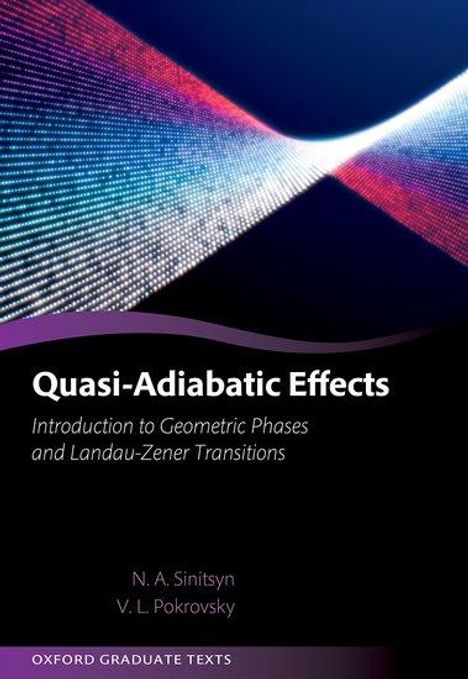Nikolai Sinitsyn: Quasi-Adiabatic Effects, Gebunden
Quasi-Adiabatic Effects
- Introduction to Geometric Phases and Landau-Zener Transitions
Sie können den Titel schon jetzt bestellen. Versand an Sie erfolgt gleich nach Verfügbarkeit.
- Verlag:
- Oxford University Press, 02/2026
- Einband:
- Gebunden
- Sprache:
- Englisch
- ISBN-13:
- 9780198988007
- Artikelnummer:
- 12370582
- Umfang:
- 320 Seiten
- Erscheinungstermin:
- 5.2.2026
- Hinweis
-
Achtung: Artikel ist nicht in deutscher Sprache!
Klappentext
Quasi-adiabatic theory has broad applications across disciplines, from quantum computing and cosmology to materials science and atomic physics. This textbook offers a comprehensive introduction to quasi-adiabatic effects and their applications.
In modern physics, the term "adiabatic" refers to the infinitely slow evolution limit. Quasi-adiabatic theory, by contrast, describes time-dependent processes that are slow but not truly adiabatic. This theory is especially rich in effects that can be understood even in systems with complex many-body interactions. Examples from research in quantum computing, phase transitions, ultra-cold atoms, and quantum control are used throughout the book.
Quasi-Adiabatic Effects: Introduction to Geometric Phases and Landau-Zener Transitions is aimed at undergraduate and graduate students, interested in more advanced quantum and classical mechanics, as well as researchers who deal with nonequilibrium physics. The book is also an excellent illustration of methods of complex analysis applied in these fields. Several topics, such as the Dykhne formula (Chapter 7) and multistate Landau-Zener theory (Chapter 11), are discussed here for the first time in a textbook style.
In addition, readers will find numerous thoughtfully designed problems, complete with solutions.

